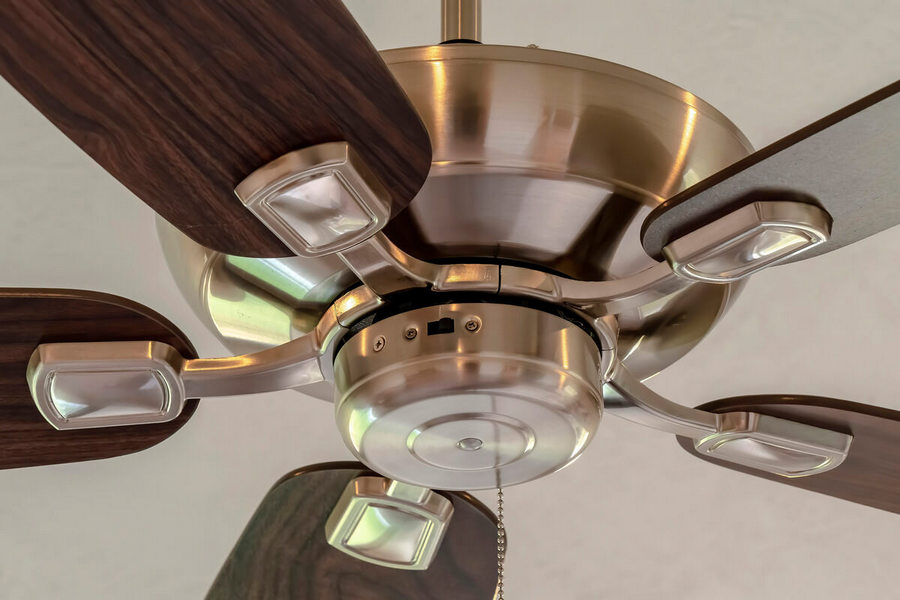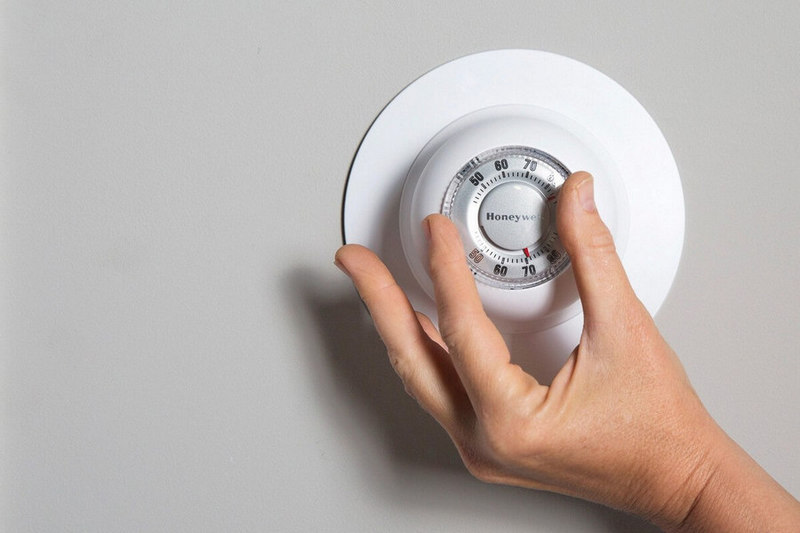These days, ceiling fans are a standard element in every house. Fans may be found in a wide variety of shapes, sizes, and designs, and many even have built-in lighting. They serve a functional purpose by keeping the air moving around the space and can also be utilized as a stylish accent piece.
It is crucial to choose a good quality ceiling fan that will last for a long time. However, its installation can be quite troublesome, especially if you didn’t have one previously installed. The main issue here is its weight. Thus, if you’ve been asking yourself, “How much does a ceiling fan weigh?” look no further, as we are about to cover all the vital tidbits.
Factors Influencing Ceiling Fan Weight
Before we describe all the major components that can alter the mass parameter of a ceiling fan, it is important to mention that the regular weight of this device ranges from 12 to 50 pounds. There are several things that influence the weight of a ceiling fan:
- Size
- Material
- Quantity of blades
- Lights and other props
So, let’s dwell upon each of them a little bit more.
Size
Although commercial fans may be much bigger, the typical ceiling fan size ranges from 30 to 75 inches. Fans with a wider diameter naturally weigh more than their smaller counterparts while being structurally identical.
To make it easier to understand how size correlates to weight, take a look at the following table (the weight parameters provided are the average ones).
| The fan diameter (in inches) | The fan weight (in pounds, rounded) |
| 30 | 12 |
| 42 | 15 |
| 44 | 16.5 |
| 52 | 19 |
| 70 | 20 |
| 72 | 25.5 |
Material
This particular criterion also exerts quite an influence on a ceiling fan’s weight. However, you have to understand that there is no particular correlation between the materials a fan is made from and its diameter.
Of course, producers try to use lightweight components to make their devices less weighty. They employ aluminum, stainless steel, and plastic, among other metals, and wood, as much as possible.
Indeed, many fans in homes and businesses use metal housing with hardwood blades. The two together make for a stunningly sophisticated but airy ensemble. Alternatively, metal blades are the most efficient and long-lasting, while plastic ones are the most low-maintenance.
It goes without saying that metal fans are heavier than plastic and wooden ones. The biggest metal fans can reach up to 50 pounds, so if you are looking for something lighter, it is better to choose devices manufactured from wood or plastic.
Quantity of blades
Another parameter that regulates the weight of a ceiling fan is the number of blades. Generally speaking, the greater the number of blades, the greater the overall weight.
This criterion is tightly connected to the previous one — materials. This is why a ceiling fan with three blades made of metal may be much lighter than an equivalently sized fan made of wood or plastic with five blades.
Also, it is better to keep in mind that the number of blades has a large effect on the fan’s overall size and weight but a much smaller effect on the fan’s performance. The latter is highly dependent on blades’ size, their angle, and torque.
Lights
Lighting props are another factor that might add a few extra pounds to a total mass. Although a single light fixture shouldn’t add too much weight to the fan, the difference will be more noticeable if the fan uses numerous lightbulbs and each one has its own diffuser.
More wire is required to install it, but it won’t be noticeable in terms of mass.
Any extras you add to your fan for the sake of decorating it will just serve to increase its total mass, as was previously indicated. Although this shouldn’t stop you from going all out on a ceiling fan that looks more like a chandelier, it is something to think about.
Related: Ceiling fan light troubleshooting tips
How to Know Whether Your Junction Box Can Support a Ceiling Fan
Fan-rated junction boxes are often taken as a superior choice for ceiling fans. These boxes are special as they give you a 100% guarantee that the producer has created and tested them to sustain the weight of a huge ceiling fan.
Take into account that these special junction boxes are created to handle fans that weigh between 35 and 70 pounds. This means that even the toughest junction boxes won’t be able to hold a person as a regular grown-up has a body mass ranging from 130 to 180 lbs.
If the mass of your ceiling fan is under 35 pounds, though, you probably won’t require a special junction box. The majority of fans on the market weigh far less than that. Hence, you may discover several solutions from reliable manufacturers that cater to a wide range of tastes and budgets.
According to National Electrical Code 314.27 (C), designers must clearly indicate on a junction box’s label whether or not it is suitable for use with ceiling fans. Consequently, checking the inside of a junction box for signs of a fan is the simplest method for determining its suitability.
All you have to do is check the inside of the junction box, where there should be a label given by the manufacturer. The label should contain information like acceptable or approved for fan support.
Also, pay attention to the fact that if your junction box was rigged up before 1987 (before the NEC established a fan-rating requirement), there is a high probability that it is not suitable for holding a ceiling fan.
How Much Weight Can a Ceiling Fan Hold?
The maximum load that a fan can withstand is a difficult and complex question to answer. Whenever you come across the idea of putting anything on your ceiling fan, it is crucial to take it into account and consider a few things carefully.
To start with, you need to be aware that the weight capacity of the ceiling fan box plays a significant role in determining whether or not anything may be hung from a light fixture or ceiling fan. Each ceiling fixture box is given a specific rating and is required to undergo additional pre-testing at a facility that is not affiliated with the company manufacturer. The maximum weight that various fittings are able to sustain varies depending on the kind of fixture.
On the other hand, it is essential for you to be aware that you should not, in most cases, put anything on the ceiling fan. The house decoration process may incorporate adding some light accessories (paper garland or some other small decorative items) but nothing more than that. There is a possibility that the original electrical box was not constructed to be able to support any extra weight.
What’s more, depending on the way the electrical boxes are installed, the weight of a ceiling fan by itself may occasionally be incompatible with the capacity of the box. Because of this, it is imperative that you appropriately attach a ceiling fan. Otherwise, it may just fall.
Summarizing everything said above and taking into account standard fan weight, we may conclude that an average fully rigged-up ceiling fan box can hold around 50-60 lbs.







